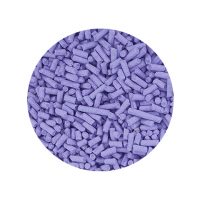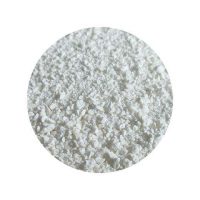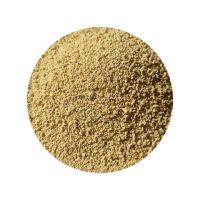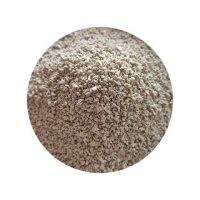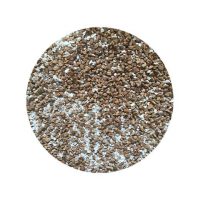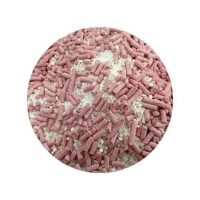As a loving cat owner, providing the best possible care for your furry companion is a top priority. One essential aspect of feline well-being is their litter box environment. Choosing the right cat litter can significantly impact your cat’s comfort, health, and overall happiness.
In this comprehensive guide, we’ll delve into the world of cat litter testing. We’ll explore various types of litters, discuss key factors to consider when making a cat litter selection, and provide valuable tips for maintaining a clean and hygienic litter box. By the end, you’ll be equipped with the knowledge to choose the purrfect litter for your feline friend.
What Is Cat Litter Test

A cat litter test is a systematic evaluation of different cat litters to determine their suitability for feline needs. This process typically involves assessing various factors such as:
- Clumping ability: How well the litter clumps when it comes into contact with urine, making for easy cleanup.
- Odor control: The litter’s effectiveness in neutralizing unpleasant odors.
- Dustiness: The amount of dust generated by the litter, which can irritate your cat’s respiratory system.
- Tracking: How much litter is tracked throughout your home.
- Texture: The feel and consistency of the litter, which can influence your cat’s preference.
- Price: The cost per unit of litter, considering factors like usage rate and desired features.
- Eco-friendliness: The litter’s environmental impact, including its sourcing, production, and disposal.
- Cat preference: Ultimately, the most important factor is whether your cat likes the litter. Some cats may have specific preferences for texture, scent, or other characteristics.
By conducting a thorough cat litter test, you can identify the best option for your feline friend, ensuring their comfort, health, and a happy litter box experience.
How to Test Cat Litter

Testing cat litter involves a combination of observation, experimentation, and your cat’s feedback. Here’s a detailed guide to help you evaluate different litters:
1. Observe Your Cat’s Behavior:
- Litter box usage: Pay attention to how often your cat uses the litter box and if there are any signs of discomfort or avoidance.
- Urine clumping: Check if the urine clumps effectively, making it easy to scoop out.
- Tracking: Observe how much litter is tracked throughout your home.
- Digging habits: Watch if your cat exhibits excessive digging or scratching in the litter box.
2. Assess Litter Characteristics:
- Dustiness: Gently stir the litter and check for cloudiness. Excessive dust can irritate your cat’s respiratory system.
- Odor control: Evaluate how well the litter absorbs and neutralizes odors.
- Texture: Determine if the texture is suitable for your cat’s preferences. Some cats prefer soft, clumping litters, while others may prefer coarser options.
- Clumping ability: Test the litter’s clumping ability by adding a small amount of water and observing how well it forms clumps.
3. Consider Environmental Factors:
- Litter box placement: Ensure the litter box is in a quiet, private location away from food and water sources.
- Box size: The litter box should be large enough for your cat to comfortably stretch out.
- Cleaning frequency: Regularly clean the litter box to prevent odor buildup and maintain a hygienic environment.
4. Gather Feedback from Your Cat:
- Litter box avoidance: If your cat starts avoiding the litter box, it might be a sign that they dislike the litter.
- Excessive grooming: Excessive grooming can sometimes indicate discomfort or stress, which could be related to the litter.
- Urine spraying: If your cat starts spraying urine outside the litter box, it could be a behavioral issue triggered by discomfort with the litter.
By following these steps and carefully observing your cat’s behavior, you can effectively test different cat litters and find the perfect option to suit your feline friend’s needs.
Methods for Testing Cat Litter

There are several methods to test cat litter, each with its own advantages and disadvantages:
1. Direct Observation:
- Observe your cat’s behavior: Watch how your cat interacts with the litter, including how often they use the box, how much they dig, and if they exhibit any signs of discomfort.
- Check for tracking: Notice how much litter is tracked throughout your home.
- Evaluate odor control: Assess how well the litter absorbs and neutralizes odors.
2. Clumping Test:
- Add water: Pour a small amount of water onto the litter and observe how well it clumps.
- Evaluate clump strength: Test the strength of the clumps by gently squeezing them.
- Check for clump size: Assess whether the clumps are of a desirable size for easy scooping.
3. Dustiness Test:
- Stir the litter: Gently stir the litter and observe how much dust is released.
- Check for cloudiness: Look for any cloudiness in the air.
- Evaluate your cat’s reaction: Watch for signs of respiratory distress or discomfort in your cat.
4. Tracking Test:
- Place the litter box on a dark surface: This will help you see any litter that is tracked outside the box.
- Observe your cat’s behavior: Watch how much litter your cat tracks as they enter and exit the box.
- Evaluate tracking: Assess the amount of litter tracked and its impact on your home’s cleanliness.
5. Odor Control Test:
- Add a small amount of urine: Simulate urine by adding a small amount of a liquid with a strong odor, such as vinegar.
- Observe odor absorption: Evaluate how well the litter absorbs and neutralizes the odor.
- Check for odor lingering: Determine if any odor remains after a period of time.
6. Eco-Friendliness Test:
- Research the litter’s ingredients: Look for litters made from natural, biodegradable materials.
- Consider the production process: Evaluate the environmental impact of the litter’s manufacturing process.
- Check for recyclability: Determine if the litter or its packaging can be recycled.
By combining these methods, you can get a comprehensive understanding of a cat litter’s performance and select the best option for your feline friend.
Conclusion
Choosing the right cat litter is essential for your cat’s comfort, health, and overall well-being. By conducting thorough tests and considering factors such as clumping ability, odor control, dustiness, tracking, texture, price, eco-friendliness, and your cat’s preferences, you can make an informed decision.
Ready to find the purrfect litter for your feline friend? Contact us today for wholesale cat litter options that meet your specific needs and budget. Our high-quality litters are designed to provide exceptional performance and ensure a happy and healthy environment for your cat.


